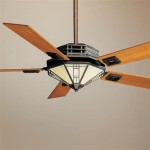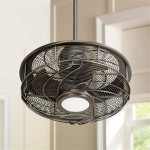What Is The Point Of High Ceilings?
High ceilings, often defined as those exceeding the standard eight-foot height, have been a sought-after architectural feature for centuries. Their enduring appeal stems from a combination of aesthetic and practical advantages that significantly impact the perception and functionality of a space. Understanding the benefits of high ceilings allows for informed decisions during the design and selection process of both residential and commercial properties.
Enhanced Sense of Space and Openness
One of the most immediate effects of high ceilings is the creation of a more spacious and airy atmosphere. By increasing the volume of the room, high ceilings minimize the sense of confinement, offering a greater feeling of freedom and breathability. This is particularly advantageous in smaller rooms or those with limited natural light, where the added height can create an illusion of expansiveness.
Improved Natural Light and Ventilation
High ceilings allow for larger windows and higher placement of window openings. This facilitates greater penetration of natural light, brightening the space and reducing the need for artificial illumination. Improved natural light contributes to a healthier and more inviting environment. Additionally, high ceilings promote better air circulation. Warmer air naturally rises, creating a more comfortable and consistent temperature throughout the room.
Architectural Grandeur and Design Flexibility
High ceilings lend an air of elegance and grandeur to a space, evoking a sense of sophistication and architectural significance. They offer a blank canvas for dramatic design elements, such as large chandeliers, intricate moldings, and exposed beams, enhancing the aesthetic appeal of the room. The added height also allows for greater flexibility in furniture placement and the incorporation of taller decorative elements.
Acoustic Advantages
In rooms with high ceilings, sound waves have more space to travel and dissipate before reflecting back. This can lead to improved acoustics, reducing echo and reverberation, particularly beneficial in larger spaces used for gatherings or entertainment. While proper acoustic treatments are still often necessary for optimal sound quality, high ceilings provide a foundation for a more balanced acoustic environment.
Increased Property Value
High ceilings are often considered a premium feature in real estate, contributing to increased property value. The perceived spaciousness, architectural appeal, and design flexibility associated with high ceilings make them a desirable characteristic for potential buyers. This can translate to a higher return on investment for homeowners and developers.
Psychological Impact
Studies suggest that high ceilings can positively impact mood and cognitive function. The feeling of spaciousness is thought to promote creative thinking and a sense of freedom. The enhanced natural light contributes to improved mood and overall well-being. While further research is needed to fully understand these effects, the perceived psychological benefits of high ceilings add another dimension to their appeal.
Considerations for High Ceilings
While high ceilings offer numerous advantages, it's important to consider the potential drawbacks. Heating and cooling costs can be higher in rooms with high ceilings due to the increased volume of air that needs to be conditioned. Maintenance and cleaning can also be more challenging, requiring specialized equipment or professional assistance. Balancing these considerations with the benefits is crucial in determining whether high ceilings are the right choice for a particular space.
Adaptability and Functionality
The versatility offered by high ceilings extends to their ability to accommodate various functionalities. From lofted spaces and mezzanine levels to dramatic lighting installations and oversized artwork, the increased vertical space allows for creative solutions to maximize functionality and personalize the environment. This adaptability makes high ceilings a relevant and desirable feature across a wide range of architectural styles and purposes.
Integration with Design Elements
High ceilings provide an ideal backdrop for showcasing architectural and decorative elements. Exposed beams, intricate ceiling medallions, and dramatic light fixtures can be effectively integrated to enhance the overall aesthetic. The added height allows these features to become focal points, contributing to the character and visual interest of the room. Careful consideration of the interplay between ceiling height and design elements can result in a harmonious and impactful space.

Staging Tip How To Take Advantage Of High Ceilings Luxury Home And Design San Diego Orange County

How A High Ceiling Can Impact Your Home Experience

How To Take Advantage Of High Ceilings In Renovations Archdaily

High Ceilings And How To Live With Them Bob Vila

How A High Ceiling Can Impact Your Home Experience

High Ceilings And How To Live With Them Bob Vila

Staging Tip How To Take Advantage Of High Ceilings Luxury Home And Design San Diego Orange County

How To Take Advantage Of High Ceilings In Renovations Archdaily

The Benefits Of High Ceilings In Your New Home Hallmark Homes

How A High Ceiling Can Impact Your Home Experience
Related Posts








